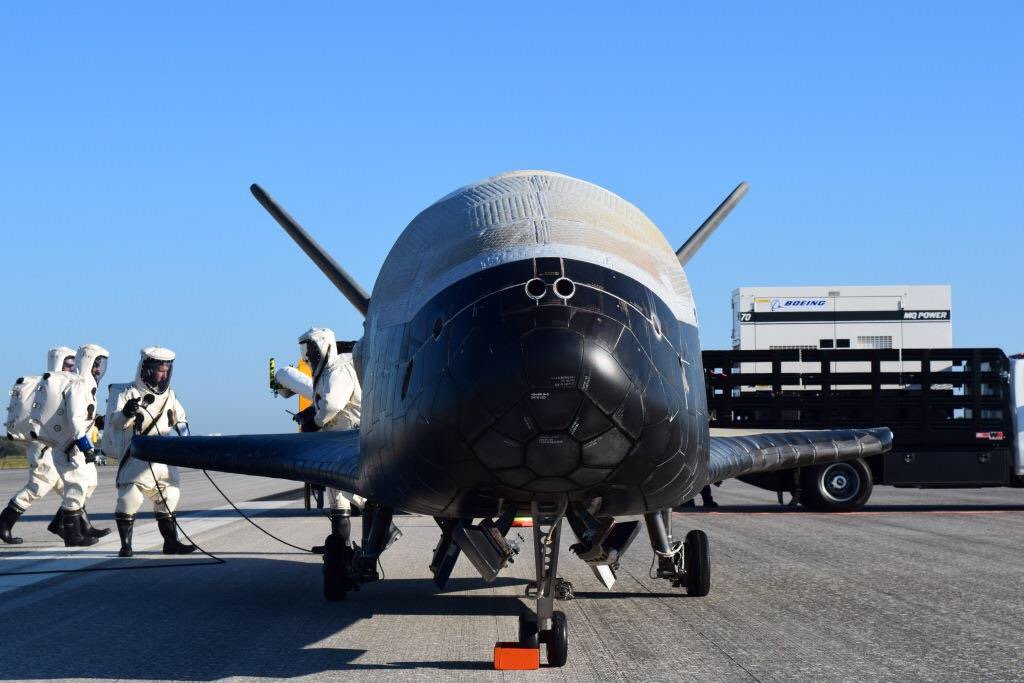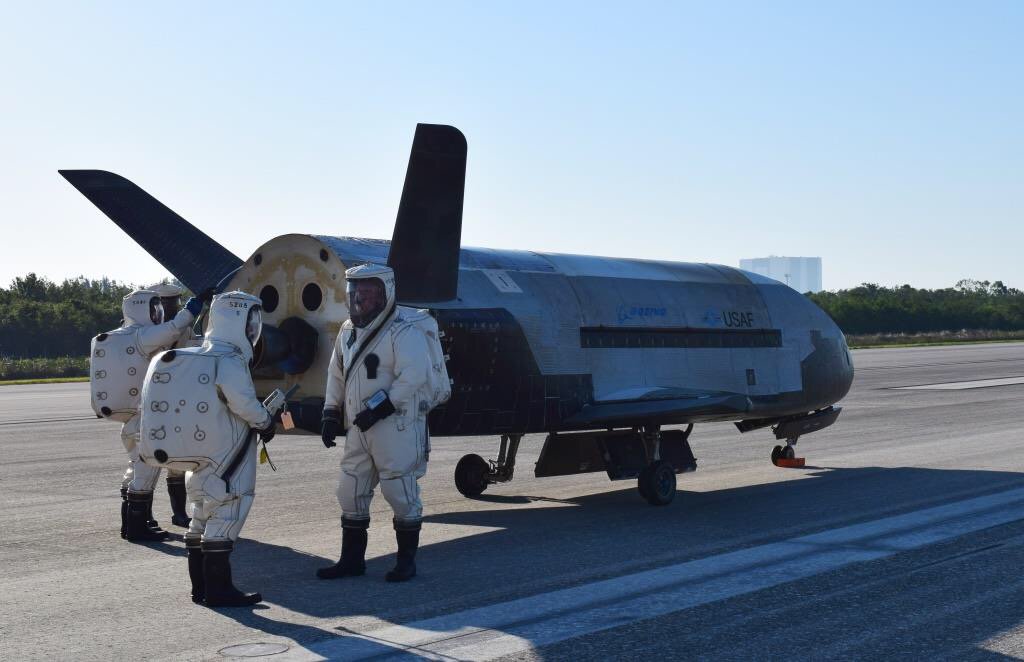Jura The idiot
General
Yesterday at 7:46 PM
Military orbiter's landing rattles Florida with sonic boom
related:
The is back after more than 700 days in .


Military orbiter's landing rattles Florida with sonic boom
U.S. military officials say an unmanned aircraft orbiting Earth since May 2015 has landed in Florida.
The Air Force posted tweets that the X-37B shuttle landed Sunday morning at the Kennedy Space Center in Cape Canaveral after 718 days in orbit.
Multiple media outlets reported that the 29-foot-long aircraft's return caused a sonic boom that rattled central Florida and could be heard as far away as Tampa and Fort Myers.
It's the shuttle's first landing in Florida. Previous X-37B missions have landed at Vandenberg Air Force Base in California.
In a statement , officials said the X-37B shuttle is "an experimental test program to demonstrate technologies for a reliable, reusable, unmanned space test platform for the U.S. Air Force."
Another mission is scheduled to launch from Cape Canaveral later this year.



